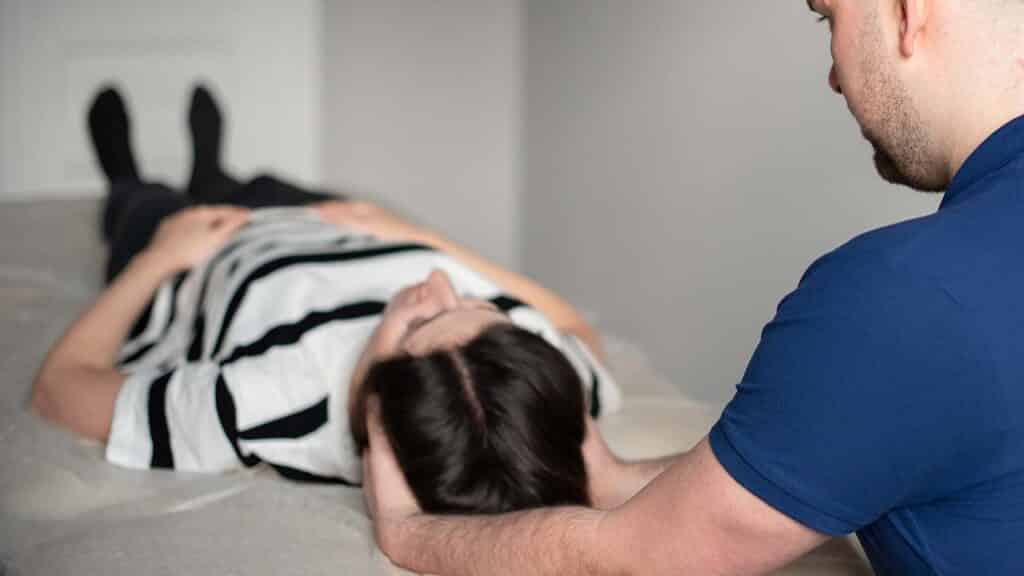
Osteopathy is one of the methods used to combat stress and anxiety disorders. The manipulative and pressure techniques quickly bring relief and lead to significant improvement. Tensions in the body are often related to traumas, strong stress, accidents, injuries, depression, and osteopathy restores balance to the body and allows for the elimination of existing discomfort.
Anxiety disorders are a problem of the 21st century that affects an increasing number of people. Today’s lifestyle, emotional suppression, and constant stress cause more and more people to suffer from various psychosomatic disorders. WHO estimates that anxiety disorders are the most common of all mental disorders and affect more than 10% of the population. They are often the result of untreated traumas from the past, which cause many unfavorable symptoms. The inability to express emotions causes unhealthy energy to accumulate in the body, which causes tension and numerous physical and mental discomforts. Accumulating problems cause the appearance of irrational fear, which hinders normal functioning. Headaches, digestive system disorders, sweating, body tremors, and a constant feeling of irritation may occur. There may also be difficulties in socializing, performing one’s profession, concentrating, and a lack of willingness to do anything, as well as constant fatigue. The therapy of psychosomatic disorders is difficult and requires the patient and therapist to work together. Osteopathy is an effective method that supports the treatment of anxiety disorders.
Table of Contents
Craniosacral therapy – an effective method in the fight against psychosomatic disorders
Craniosacral therapy involves balancing the autonomic nervous system. It enables the restoration of balance and eliminates physical discomfort, which is often the result of traumas stored in the body. Craniosacral therapy effectively releases existing blockages. During the treatment, the circulation of cerebrospinal fluid is improved, resulting in a calming effect on the nervous system and regulation of tension in the membranes. The other systems, such as the nervous, visceral, and hormonal systems, begin to function better and achieve equilibrium. This leads to a reduction in the excitability of the autonomic nervous system and improves the functioning of the circulatory system. Patients regain the ability to function normally and live without fear.
Craniosacral therapy – indications
The craniosacral therapy has few contraindications, and most patients confirm its effectiveness. It cannot be used in patients with meningitis, aneurysms or tumors in the skull, stroke patients, or those with recent injuries requiring surgical intervention. Children, including newborns, pregnant women, and elderly individuals can benefit from this therapy. Indications for starting the therapy include:
- mood disorders
- anxiety states
- constant irritation
- problems with concentration
- insomnia
- unexplained pain
- hyperactivity
- hormonal disorders
- musculoskeletal problems, including the spine
- postural defects
- increased muscle tension
- lack of energy
- headaches.
Osteopathy demonstrates that a disease affecting one organ can have a negative impact on the entire body, which is why therapy is not limited to a single area. The patient’s overall physical and psychological condition is taken into account. An osteopath understands that the source of pain in one area may be related to problems in a completely different area. Headaches or issues with the cervical spine may be the result of prolonged stress rather than injury or trauma. Treatments gradually restore balance to the entire body by improving circulation, stretching tissues, and relieving tension. By affecting the craniosacral, musculoskeletal, and visceral systems, as well as stimulating metabolic, biochemical, and circulatory functions, the patient’s ability to self-heal increases.
What is craniosacral therapy?
Craniosacral therapy, also known as cranial therapy, is a manual technique that involves gentle manipulation and pressure. Its goal is to minimize tension in the skull, pelvis, diaphragm, chest, and sacrum. In the treatment of psychological problems such as anxiety, nervousness, and depression after physical trauma, working on the bones of the skull is very important as it leads to relaxation of connective tissue structures. The tension in this area can be the cause of many painful conditions. The procedures performed by an osteopath are subtle and delicate. The touch is minimal, about 5 grams, but the fascia and nervous system respond very well and effectively to it. One therapy session lasts from 60 to 90 minutes. At the beginning, the osteopath relaxes the transverse structures, followed by the vertical ones. The last stage is the relaxation of the dura mater of the spinal cord and brain. During the procedures, some patients may experience intense warmth or cold, tingling, numbness, muscle spasms, and tremors in the limbs. Dizziness may occur. It happens that patients fall asleep or, conversely, due to the release of strong emotions, cry or scream. After the therapy, the patient is relaxed and charged with positive energy. The first effects of the treatment are visible after one session, but the greatest effectiveness is observed after about 5-10 treatments. It is recommended that the therapy be carried out every 3-5 days. The final result is complete relaxation of the fascia and regulation of the craniosacral rhythm.
Almost anyone can undergo cranio-sacral therapy, which improves overall health and increases immunity. People suffering from anxiety disorders and experiencing strong traumas will feel a significant improvement in their daily functioning as a result of osteopathic treatment.

